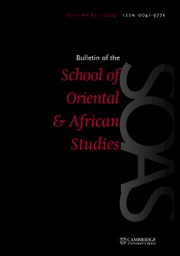This book tells the story of the tea industry in China and India during the 19th and early 20th centuries. The overall storyline is a zigzag movement in the prominence of the two regions. At the curtain's open, India does not yet participate in commercial tea cultivation whereas China globally predominates. Next, the British introduce tea cultivation into Assam, directly copying Chinese production methods, partly with the help of Chinese experts. Around 1904 Indian tea exports surpass those of China. By the 1930s, it was the Chinese – the book particularly tracks the career of Wu Juenong – who were studying Assam in order to introduce new methods back home in China. Alongside the descriptive account of these changes and the technical production techniques and regimes of labour discipline that underpin them, the book attempts a two-part theoretical intervention on capitalism, arguing namely: (1) that capitalism was born global and embraces coercive labour regimes, i.e. free labour is not capitalism's differentia specifica; and (2) that in both regions the ideological embrace or rejection of classical political economy by tea industry theorists arose from the vantage point on the world economy of the writer in question. Put differently, the infrastructural facts of the tea trade gave rise to the superstructure of tea's ideologues. This materialist account of the reception of Smithian political economy in Asia is fascinating and original; to my mind it is the core of the work's contribution.
In contrast, the argument that capitalism was always global in scope and compatible with forced labour is a dead horse in no need of a fresh beating. For a work squarely within the Marxist intellectual tradition (citing Robert Brenner, David Harvey, Moishe Postone, Answar Shaikh, etc.), I was surprised that Liu nowhere acknowledges the fit between his account and the emphasis by Rosa Luxemburg's and Vladimir I. Lenin's on the need for capitalism to use unfree labour outside the metropole. He cites neither author.
Content with the observation that capitalism does not require free labour, Liu makes no attempt to theorize the place of both unfree and free labour within capital's laws of motion. In a contribution too new for Liu to have consulted, Søren Mau provides a useful theoretical framework for why and when capitalism demands slavery (Mute Compulsion, 2023). Mau distinguishes between three forms of power: political, ideological, and economic. Political power is the use of violence to compel. Ideological power is the use of persuasion to coax consent. When market mediation interposes itself between a person and the preconditions of her continued life, this is economic power; it requires neither guns nor fine words. Using this framework, the tea growers of the Wuyi mountains used ideological power to convince their workers to labour as intensively as possible, and the tea growers of Assam compelled their workers to labour with the threat of violence. In both cases, the absence of a class of free labourers meant that capital could not avail itself of economic power per se. This framework accounts both for how Chinese and Indian tea cultivation already took part in the capitalist world system and for how they were not yet part of the capitalist world system. This distinction parallels Marx's contrast between formal and real subsumption.
Liu's zigzag story of technological innovation and labour productivity increases between China and India fits perfectly with Charles Post's work on the place of slavery in the development of US capitalism (The American Road to Capitalism, 2011). Post points out that by treating labour power as constant capital rather than variable capital, regimes of unfree labour have no incentive to increase productivity through technological innovation. In Post's view such regimes only innovate when they expand to new geographic areas or switch to new crops. Post gives the examples of the expansion of sugar cultivation to Cuba and the switch from tobacco to cotton in the southern states of the USA. With the help of Liu's study, we can now add tea in China and tea in India as two further examples of this pattern. The elegant fit between Post's theory and Liu's case studies further suggests that in Liu's attempt to decentre capitalism from the West and from wage labour he has overplayed his hand.
Despite these ways in which Liu might have better contextualized and theorized his contribution, the book is an unambiguous contribution, both to East Asian economic history and to the history of capitalism. The detailed treatment of the burning of incense sticks to set the pace of work in tea production alone constitutes a valuable contribution to our understanding of the historical emergence in a non-European context of “socially necessary abstract labor time” – the lynchpin of Marx's entire system.



